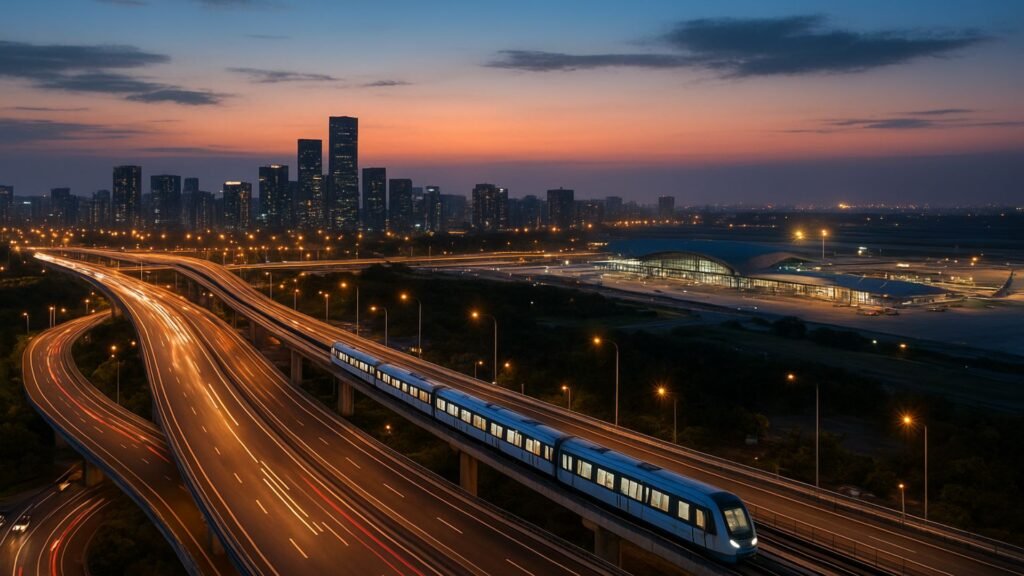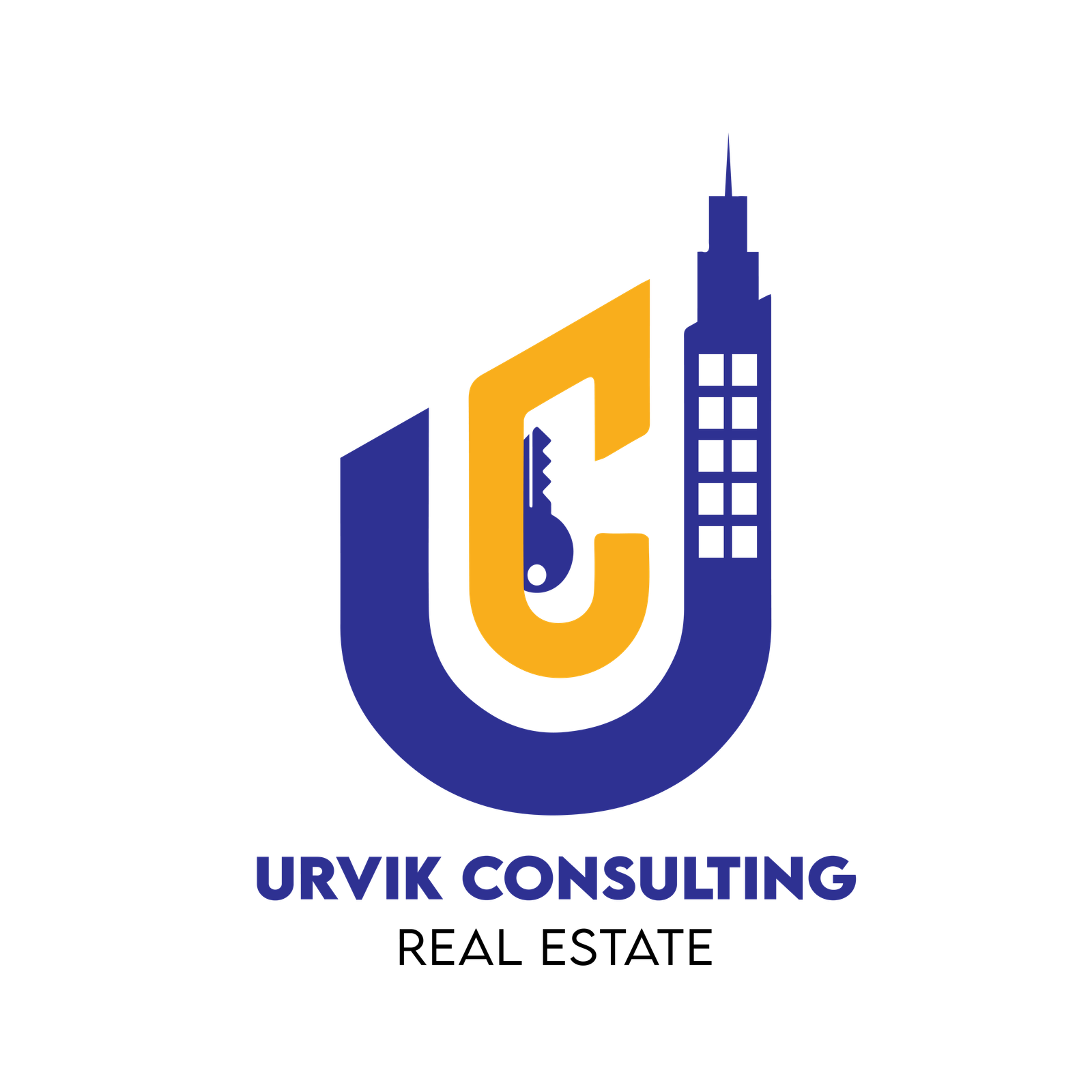 Real Estate
Real Estate
Table of Contents
When people begin searching for a home, the first considerations are usually the number of bedrooms, the kitchen layout, or whether the balcony offers a good view. Price, builder reputation, and amenities also feature high on the checklist.
Yet, one critical factor often gets overlooked: real estate connectivity.
Connectivity does not always appear in marketing brochures, but it plays a vital role in shaping your daily life and determining the long-term value of your property. Roads, metro networks, and airports together form the invisible infrastructure that drives convenience, lifestyle quality, and appreciation potential.
As Urvik Consulting, we advise both homebuyers and investors to give connectivity the same weight as floor plans or pricing. Here’s why.
Roads: The Everyday Lifeline
Why Good Roads Matter
Roads form the backbone of any city. They link homes to workplaces, schools, hospitals, shopping complexes, and recreation hubs. A well-connected road network reduces commute times, improves accessibility, and lowers everyday stress.
On the other hand, poor road conditions and constant traffic congestion can dramatically reduce quality of life. A journey that should take 20 minutes can easily stretch to an hour if bottlenecks dominate the area.
For example, homes located close to Bengaluru’s Outer Ring Road have consistently appreciated faster than properties in areas with limited road access.
Impact on Property Value
Well-planned road infrastructure always attracts real estate development. Businesses, hospitals, and schools follow areas with accessible roadways, which in turn boosts housing demand. Over time, this creates a multiplier effect on property values.
What Buyers Should Check
- Does the property have direct access to key arterial roads?
- How heavy is peak-hour traffic in the neighborhood?
- Are there government-approved plans for new flyovers, expressways, or bypass routes?

Metro Lines: Reliable Urban Mobility
Why Metro Connectivity Matters
In today’s expanding cities, metro systems have become essential for quick, reliable, and stress-free travel. Unlike road transport, metro routes offer predictable schedules, no congestion, and faster point-to-point movement.
For working professionals, students, and senior citizens, living close to a metro station means significant time savings and lower dependence on personal vehicles. It can also reduce fuel, parking, and maintenance expenses for families.
Effect on Property Prices
Research consistently shows that properties within a one- to two-kilometer radius of a metro station appreciate faster. Developers actively highlight metro connectivity as a major selling point, making such homes more attractive for buyers and investors.
Delhi-NCR is a clear example. Localities like Dwarka, Noida, and Gurgaon saw rapid growth in housing demand and property values after the Delhi Metro expanded into those areas.
Lifestyle Benefits
- Predictable travel schedules reduce stress.
- Safer and more convenient for children and senior citizens.
- Encourages sustainable living by lowering car usage and emissions.
What Buyers Should Consider
- Is the property within a 10–15 minute walk or short ride to the nearest metro station?
- Are there upcoming metro extensions that could boost future connectivity?
- Does the area provide last-mile connectivity options like autos, cycle stands, or feeder buses?
Airports: Drivers of Growth and Convenience
Why Proximity to Airports Helps
Even if you don’t fly often, living near an airport brings significant advantages. It improves accessibility for business trips, vacations, or emergencies. More importantly, airports act as growth magnets.
They attract businesses, create employment, and fuel the development of hotels, office complexes, and premium housing. Over time, this ripple effect raises the value of residential properties in nearby areas.
Hyderabad is a prime example. The Rajiv Gandhi International Airport spurred rapid development in surrounding zones like Gachibowli and Shamshabad, now recognized as IT and residential hubs.
Finding the Right Distance
However, being too close to an airport can lead to noise pollution and traffic congestion. The ideal distance for homebuyers is typically 5–10 kilometers—close enough for convenience, but far enough to avoid constant disruption.
Factors to Keep in Mind
- Is the home directly under a flight path?
- Are there height restrictions on nearby properties?
- What is the quality of airport approach roads, especially during peak seasons?
How Roads, Metro, and Airports Work Together
Connectivity is most powerful when these three elements—roads, metros, and airports—work together.
- Roads ensure smooth access to metro stations and airports.
- Metros reduce daily commuting stress and transportation costs.
- Airports bring business opportunities, employment, and regional growth.
This combination creates neighborhoods that are convenient today and valuable tomorrow. For investors, such areas often provide the strongest long-term returns.
The Future of Real Estate Connectivity
Indian cities are evolving rapidly. Governments are prioritizing infrastructure projects such as expressways, ring roads, metro extensions, and integrated townships. These initiatives aim to decongest cities and improve mobility.
For homebuyers and investors, this translates into:
- More transparency about upcoming infrastructure projects.
- Higher potential for property appreciation in well-connected corridors.
- Sustainable living options with reduced reliance on private vehicles.
How Urvik Consulting Supports Your Decisions
At Urvik Consulting, we believe buying a property is not just about the four walls—it is equally about the ecosystem around it. Our expertise helps clients assess real estate connectivity before making investment decisions.
We provide:
- Location analysis based on proximity to roads, metro networks, and airports.
- Insights into upcoming infrastructure projects that could boost property values.
- Strategic advice for investors to enter locations before prices surge.
With our guidance, you can make informed choices that enhance both your lifestyle and long-term returns.
Conclusion
When evaluating a home or investment property, think beyond amenities and square footage. Real estate connectivity—roads, metro access, and airports—is the true driver of convenience, lifestyle quality, and future appreciation.
- Roads improve everyday mobility and attract development.
- Metro systems provide reliable, sustainable urban travel.
- Airports fuel regional growth and connect you globally.
With the right support from Urvik Consulting, you can identify neighborhoods where connectivity ensures both a better life today and stronger returns tomorrow.
